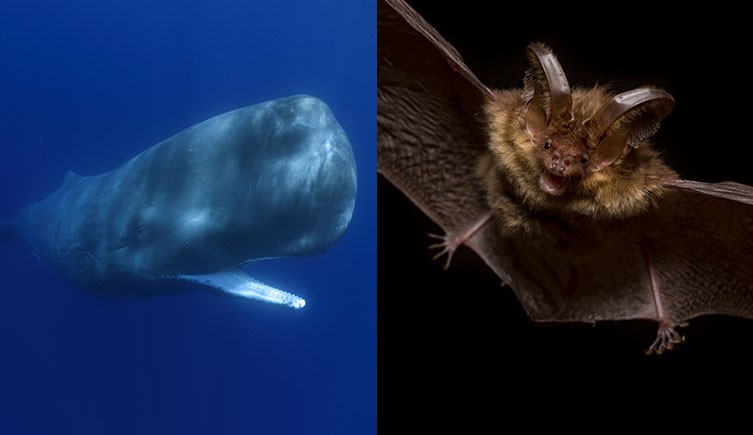What Is Convergent Evolution? Discover the definition, fascinating examples, and why it matters in understanding the diversity of life on WHAT.EDU.VN. Explore analogous structures, parallel evolution and adaptive evolution today.
1. Unveiling Convergent Evolution: When Different Paths Lead to Similar Destinations
Convergent evolution is a fascinating phenomenon in biology where distantly related organisms independently evolve similar traits or adaptations to overcome similar environmental challenges. This process results in analogous structures and behaviors that might make these organisms appear closely related, even though they are not. Are you curious to understand how unrelated species can develop striking similarities? Join us on WHAT.EDU.VN as we explore the definition, examples, and significance of convergent evolution, including parallel evolution, adaptive radiation and homologous structures.
2. The Essence of Convergent Evolution
Convergent evolution occurs when different species independently develop similar traits or adaptations in response to similar environmental pressures or ecological niches. This means that organisms that are not closely related genetically can evolve comparable features because those features provide a survival advantage in their particular environment.
2.1. Defining Characteristics
- Independent Development: The key aspect of convergent evolution is that the similar traits arise independently in different lineages.
- Environmental Pressures: These traits are often driven by common environmental factors such as climate, food sources, or habitat.
- Analogous Structures: The resulting similarities are known as analogous structures, meaning they have similar functions but do not share a common evolutionary origin.
2.2. Examples in Nature
Convergent evolution is observed across a wide range of species and ecosystems. Some notable examples include:
- Flight: Birds, bats, and insects have all independently evolved the ability to fly, each developing wings suited to their specific body structure and environment.
- Streamlined Body Shape: Sharks (fish), dolphins (mammals), and ichthyosaurs (extinct reptiles) have all developed streamlined body shapes for efficient movement through water.
- Camera Eyes: Octopuses and vertebrates (including humans) have independently evolved complex camera eyes with lenses, retinas, and irises, enabling detailed vision.
3. Why Does Convergent Evolution Occur?
Convergent evolution happens because natural selection favors certain traits that enhance survival and reproduction in a particular environment. When unrelated species face similar challenges, they may evolve similar solutions.
3.1. Natural Selection as a Driver
Natural selection is the primary mechanism behind convergent evolution. It acts on the genetic variation within a population, favoring traits that increase an organism’s fitness in its environment.
3.2. Environmental Factors
- Habitat: Species living in similar habitats, such as deserts or aquatic environments, often face comparable challenges related to water conservation, temperature regulation, and locomotion.
- Diet: Organisms that consume similar food sources may evolve similar feeding structures or digestive systems.
- Predation: Predator-prey relationships can drive convergent evolution, with prey species developing similar defenses and predators evolving similar hunting strategies.
4. Distinguishing Convergent Evolution from Divergent Evolution
It’s essential to differentiate convergent evolution from divergent evolution to understand the full scope of evolutionary processes.
4.1. Convergent Evolution
- Definition: Independent evolution of similar traits in unrelated species.
- Outcome: Analogous structures that serve similar functions but have different evolutionary origins.
- Example: Wings in birds and insects.
4.2. Divergent Evolution
- Definition: Evolution of different traits in closely related species.
- Outcome: Homologous structures that have a common evolutionary origin but may serve different functions.
- Example: The limbs of mammals, such as the human arm, bat wing, and whale flipper.
4.3. Comparative Table
| Feature | Convergent Evolution | Divergent Evolution |
|---|---|---|
| Species | Unrelated | Closely related |
| Traits | Similar | Different |
| Structures | Analogous (similar function, different origin) | Homologous (common origin, potentially different function) |
| Driving Force | Similar environmental pressures | Different environmental pressures |
| Example | Streamlined body shapes in sharks and dolphins | Limbs of mammals |




5. Examples of Convergent Evolution in Detail
Let’s delve into some detailed examples of convergent evolution to illustrate the breadth and depth of this phenomenon.
5.1. Streamlined Body Shape
- Species: Sharks (fish), dolphins (mammals), and ichthyosaurs (extinct reptiles).
- Adaptation: Streamlined body shape with a dorsal fin, pectoral fins, and a powerful tail.
- Environmental Pressure: Efficient movement through water.
- Details:
- Sharks are cartilaginous fish with a skeleton made of cartilage.
- Dolphins are marine mammals that evolved from land-dwelling ancestors.
- Ichthyosaurs were marine reptiles that lived during the Mesozoic Era.
- Despite their different evolutionary backgrounds, all three groups have converged on a similar body plan optimized for swimming.
5.2. Camera Eyes
- Species: Vertebrates (including humans) and cephalopods (octopuses and squids).
- Adaptation: Complex camera eyes with a lens, retina, iris, and optic nerve.
- Environmental Pressure: High-resolution vision for detecting predators, prey, and navigating the environment.
- Details:
- Vertebrate eyes have a retina with photoreceptor cells (rods and cones) that detect light.
- Cephalopod eyes also have a retina, but it is organized differently, lacking a blind spot present in vertebrate eyes.
- The independent evolution of camera eyes in these groups highlights the adaptive value of complex vision.
5.3. Flight
- Species: Birds, bats, and insects.
- Adaptation: Wings for powered flight.
- Environmental Pressure: Access to new food sources, escape from predators, and dispersal to new habitats.
- Details:
- Bird wings are supported by bones and covered with feathers.
- Bat wings are formed by a membrane stretched between elongated fingers.
- Insect wings are chitinous extensions of the exoskeleton.
- Each group has evolved unique wing structures, but all enable flight.
5.4. Echolocation
- Species: Bats and dolphins.
- Adaptation: Use of sound waves to navigate and locate prey.
- Environmental Pressure: Hunting in low-light or dark environments.
- Details:
- Bats emit high-frequency sounds and listen for the echoes to create a “sound map” of their surroundings.
- Dolphins use similar techniques to navigate and hunt underwater.
- The auditory systems of both bats and dolphins have evolved specialized features for processing echolocation signals.
5.5. Succulence in Plants
- Species: Cacti (Americas) and euphorbs (Africa).
- Adaptation: Fleshy stems for water storage, spines for defense, and reduced leaves to minimize water loss.
- Environmental Pressure: Arid desert environments with limited water availability.
- Details:
- Cacti and euphorbs have evolved similar adaptations to survive in deserts, despite belonging to different plant families and inhabiting different continents.
- Their similar appearances are a striking example of convergent evolution.
6. The Genetic Basis of Convergent Evolution
While convergent evolution results in similar physical traits, the underlying genetic mechanisms can be different or surprisingly similar.
6.1. Different Genetic Pathways
In some cases, different species may evolve similar traits through different genetic pathways. This means that while the end result is the same, the specific genes and mutations involved are different.
6.2. Similar Genetic Pathways
In other cases, convergent evolution can occur through similar genetic changes. This may involve the same genes or regulatory pathways being modified in different species.
6.3. Examples of Genetic Convergence
- Color Vision in Primates: Some primates have independently evolved similar genetic changes that enhance color vision, allowing them to better detect ripe fruits in the forest canopy.
- Antifreeze Proteins in Fish: Arctic and Antarctic fish have evolved similar antifreeze proteins that prevent their blood from freezing in icy waters.
7. Convergent Evolution vs. Parallel Evolution
While often used interchangeably, convergent and parallel evolution have subtle differences.
7.1. Convergent Evolution
- Starting Point: Unrelated species.
- Evolutionary Path: Different ancestral traits evolve to similar adaptations.
- Example: Wings in insects and birds.
7.2. Parallel Evolution
- Starting Point: Closely related species.
- Evolutionary Path: Similar ancestral traits evolve in similar ways, leading to similar adaptations.
- Example: Stickleback fish in different lakes evolving similar body armor and feeding structures.
7.3. Key Distinction
The primary difference lies in the relatedness of the species involved. Convergent evolution involves unrelated species, while parallel evolution involves closely related species.
8. The Significance of Convergent Evolution
Convergent evolution is significant for several reasons:
8.1. Understanding Adaptation
It provides insights into how organisms adapt to their environments and the constraints imposed by natural selection.
8.2. Predicting Evolutionary Outcomes
It allows scientists to predict potential evolutionary outcomes in different environments.
8.3. Reconstructing Evolutionary History
It helps reconstruct evolutionary history by identifying instances where similar traits have evolved independently.
8.4. Applications in Biotechnology
Understanding the genetic basis of convergent evolution can have applications in biotechnology and medicine.
9. Frequently Asked Questions (FAQs) About Convergent Evolution
| Question | Answer |
|---|---|
| What is the main difference between convergent and divergent evolution? | Convergent evolution involves unrelated species evolving similar traits due to similar environmental pressures, while divergent evolution involves closely related species evolving different traits due to different environmental pressures. |
| Can you give an example of convergent evolution in plants? | Cacti and euphorbs are a classic example. They both evolved similar adaptations, such as fleshy stems for water storage and spines for defense, to survive in arid desert environments. |
| How does natural selection drive convergent evolution? | Natural selection favors traits that enhance survival and reproduction in a particular environment. When unrelated species face similar challenges, they may evolve similar solutions through natural selection. |
| What are analogous structures? | Analogous structures are similar structures that evolved independently in different species. They serve similar functions but do not share a common evolutionary origin. |
| How is parallel evolution different from convergent evolution? | Parallel evolution involves closely related species evolving similar traits in similar ways, while convergent evolution involves unrelated species evolving similar traits. |
| What is the genetic basis of convergent evolution? | Convergent evolution can occur through different or similar genetic pathways. In some cases, different genes may be involved, while in other cases, the same genes or regulatory pathways may be modified. |
| Why is convergent evolution important? | It provides insights into adaptation, helps predict evolutionary outcomes, aids in reconstructing evolutionary history, and has applications in biotechnology and medicine. |
| Can convergent evolution occur in behavior? | Yes, convergent evolution can occur in behavior. For example, different species of birds may independently evolve similar foraging behaviors to exploit the same food sources. |
| How do scientists identify convergent evolution? | Scientists identify convergent evolution by comparing the traits, genetic makeup, and evolutionary history of different species. They look for instances where similar traits have evolved independently in unrelated lineages. |
| What role does the environment play in convergent evolution? | The environment plays a crucial role in driving convergent evolution by imposing similar selection pressures on different species. These pressures can lead to the independent evolution of similar adaptations. |
10. The Future of Evolutionary Studies
The study of convergent evolution continues to evolve, with new research shedding light on the genetic and environmental factors that drive this fascinating phenomenon.
10.1. Advancements in Genomics
Advancements in genomics are allowing scientists to identify the specific genes and mutations involved in convergent evolution, providing a deeper understanding of the genetic basis of adaptation.
10.2. Environmental Modeling
Environmental modeling and climate change research are helping predict how different species may adapt to changing environmental conditions in the future.
10.3. Interdisciplinary Approaches
Interdisciplinary approaches that combine genetics, ecology, and evolutionary biology are providing a more holistic understanding of convergent evolution.
11. Explore More on WHAT.EDU.VN
Are you eager to learn more about the wonders of evolution and the incredible diversity of life on Earth? Visit WHAT.EDU.VN to explore a wealth of articles, resources, and expert insights.
11.1. Dive Deeper into Evolutionary Biology
- Divergent Evolution: Understand how closely related species can evolve different traits to adapt to different environments.
- Natural Selection: Learn about the mechanisms that drive evolutionary change.
- Adaptation: Discover how organisms evolve to thrive in their specific niches.
11.2. Ask Your Questions
Do you have burning questions about evolution or any other scientific topic? Our platform provides a space for you to ask questions and receive answers from knowledgeable experts.
11.3. Connect with a Community
Join a community of curious minds and share your insights, discoveries, and questions about the world around you.
12. Conclusion: Appreciating the Ingenuity of Nature
Convergent evolution is a testament to the ingenuity of nature and the power of natural selection. It demonstrates how different species, facing similar challenges, can independently evolve similar solutions. By understanding convergent evolution, we gain a deeper appreciation for the complexity and beauty of the natural world.
12.1. Call to Action
Do you have questions about convergent evolution or any other scientific topic? Visit WHAT.EDU.VN today to ask your questions and connect with a community of experts and curious minds. Our platform offers free answers and expert insights to satisfy your curiosity and expand your knowledge. Contact us at 888 Question City Plaza, Seattle, WA 98101, United States, or via WhatsApp at +1 (206) 555-7890. Visit our website at WHAT.EDU.VN and let your curiosity lead the way.
Discover the answers you seek and unlock a world of knowledge at what.edu.vn. Join us today and be part of a community that values curiosity and lifelong learning.